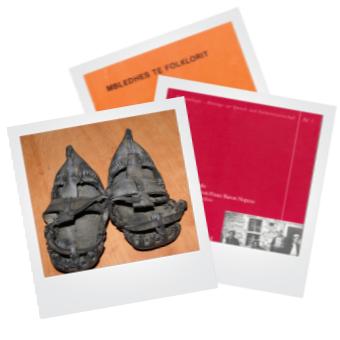Oda Dibrane, the guest room of Dibra
Every year in autumn the folk festival “Oda Dibrane” is organized, the “guest room of Dibra”. This is a festival of several days with musicians, dancers and singers in groups or as individuals from what might be called the diaspora of Dibra: Macedonia, Kosovo, Montenegro and other countries. People from Dibra were spread all over the Balkan peninsula and into Turkey as they were craftsmen and traders during the Ottoman period. (The woodwork in the Sveti Sofia church in Skopje was made by craftsmen from Dibra).
Dibra is a region situated in the north-east of Albania with Peshkopi as its administrative capital. The Macedonian counterpart across the border to the east is named “Dibra e Madhe”, greater Dibra, with the town of Debar as the centre. In 1914 the borders were drawn on a map and after WWII continued between Yugoslavia and Albania, causing families to be divided.
Yet, the Oda Dibrane is a festival where Dibra people from all over the world meet and enjoy their folklore in music, song and dance.
The folklore of Dibra has some special features.
First of all there is the Valle dyshe Dibrane. A dance for two men as anywhere else in Albania, but with special footwork. The dancers perform intricate figures and may stand still or even dance on the knuckles of their toes. The Valle e Nuseve from the village of Sllova was registered by Zeki Kastrati and is adopted in Genc Kastrati’s program of traditional Albanian dances. The newly wedded brides come together and perform this dance. Their movements symbolize the showing of their presents to the villagers and thanking them by bringing their hand to the forehead , eyes to the ground.
Another aspect is the sound of the çifteli. It has a deeper sound compared with the çifteli from other regions.
Mr. Veli Vranici, director of the “Pallati i Kulturës” in Peshkopi, Dibra region explained the way the folklore is organized, preserved and shown in the Dibra region.
The “Pallati i Kulturës” is the home of the Dibra Ensemble. The ensemble consists of local people from Peshkopi and the region around Peshkopi with older and younger people performing songs, music and dances.
The ensemble presents a concert twice a year, the first one in May as a kind of try-out and a second one later in the year. The concerts are usually held in the “Pallati i Kulturës”. There also the costumes are stored, which are sometimes hired by couples for a wedding, which numbers increase year by year. This shows the interest of a younger generation in their own folklore.
The Gjirokastër festival and Dibra
For the Gjirokastër national festival it is organized in a different way. It is not just the ensemble from Peshkopi which takes part, but the presentation of the Dibra region is selected from groups and individual musicians, singers and dancers from the local communities, the Komuna’s. These Komuna’s usually consists of a number of smaller villages, organized in a community, part of the municipality of the main city in the region, the Bashkia, Peshkopi in this case. One of the Komuna’s is the Kastriot Komuna, referring to the Kastriot Skenderbeg. In this Komuna a small museum is dedicated to the battles fought by Skenderbeg in this region. It is situated on top of a hill and can only be reached by 4x4 and on foot for the last part.
When the Gjirokastër festival is announced (latest at the end of January) groups and individuals from the Komuna’s are involved into a competition and judged and selected by specialists in the field chosen from the former scientists of the Folklore Institute or the Qendra Kombetare e Veprimtarive Folklorike nowadays, the National Centre for Immaterial Folklore in Tirana, as they organize the Gjirokastër festival.
This selection by competition also means that the folklore is kept alive in the Komuna’s by themselves and it is an honor to be selected for the Gjirokastër festival. This tradition dates back to the first national folklore festivals in Gjirokastër and still exists and flourishes.
The most famous singer from Dibra is Vera Laçi.
All activities were financed by the state during the communist period, but now the local municipalities or Bashkia’s are responsible for the financing, which makes it more difficult to get things done and with the changes by elections (local or national) there is no certainty about continuation. This also brings the question whether the Oda Dibrane festival will be continued this coming year….
The Dibra museum
There used to be a museum in Peshkopi, but due to the end of communism the property was returned to its rightful owner, which caused the museum collection to be stored for a long time.
Now a new museum has been build in the centre of Peshkopi and at the moment of writing they are still cataloguing all the objects and select objects to be on display. The ground floor exhibit shows the history of the Dibra region, the first floor shows the folk dresses of Dibra and parts of the dresses and textiles. There is a nice collection of maquettes of village dwellings and kulla’s, the fortified tower houses, which are found in the region.
In a small shop between all kinds of tools and other materials you may find a relic of days gone by: traditional Opinka, but constructed from car tire rubber….
